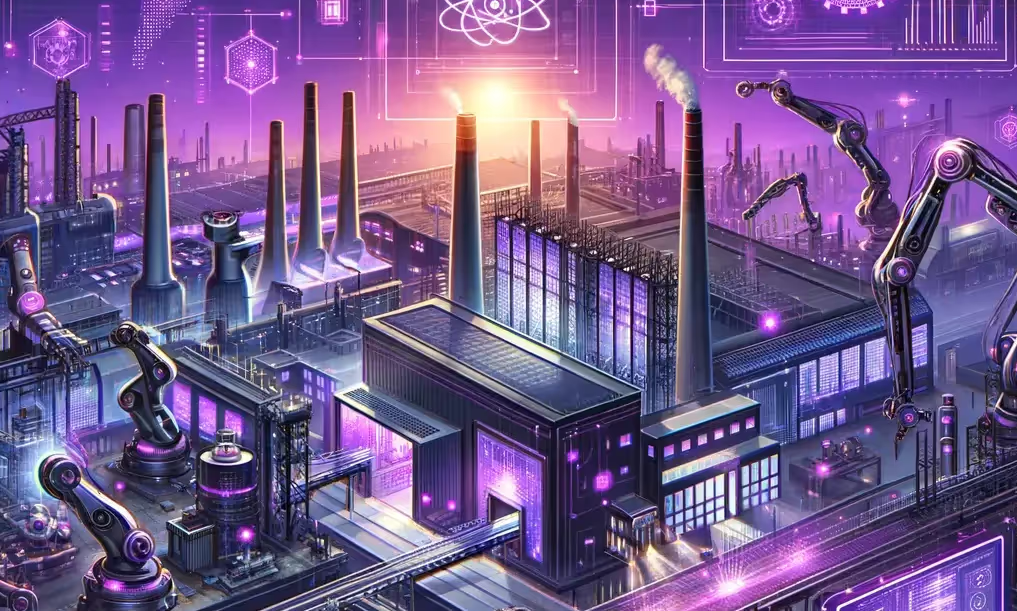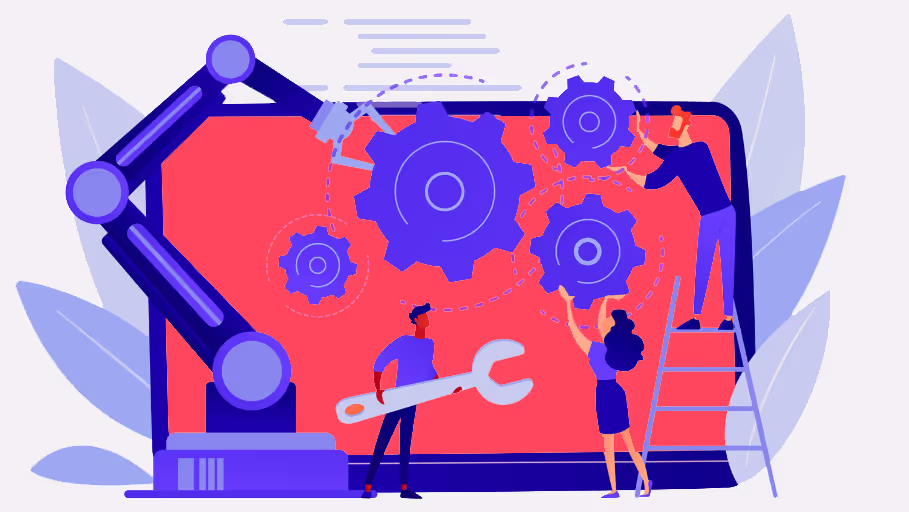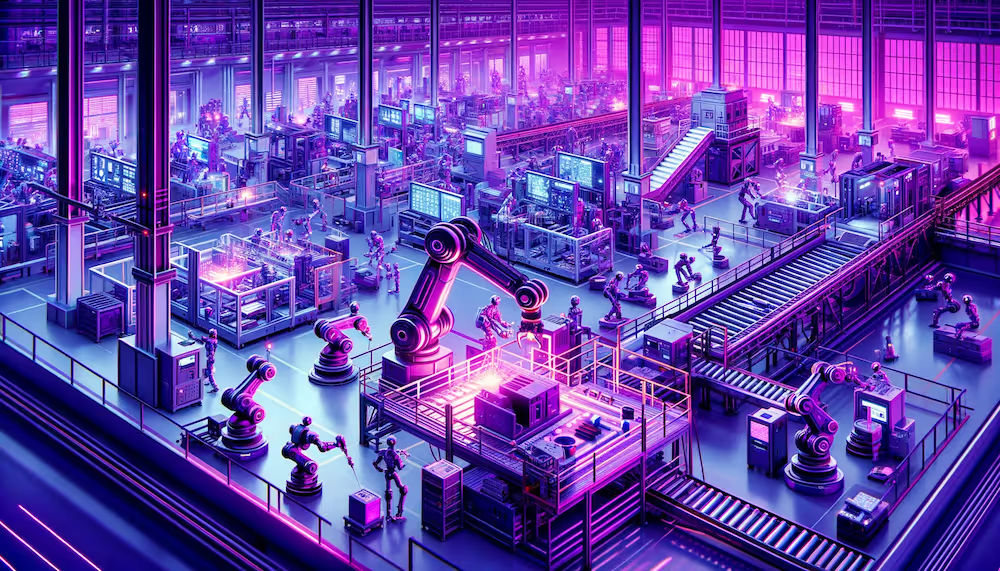Listen now
Industrial Tech has been a key focus area for us at NGP Capital since 2018, culminating in investments in companies like ANYbotics, Daedalus, GrayMatter Robotics, Scandit, Shippeo, and SVT Robotics. In the context of Venture Capital, Industrial Tech is much more in the spotlight since we first started covering the market – with AI for the physical world and software for hardware rising to become heavily funded segments.
This excitement is evident during the first half of 2024, with over ten financing rounds exceeding $100 million raised across Industrial Tech. Notable mega-rounds include Wayve's $1 billion financing to enable autonomous driving and Figure's $675 million for general-purpose humanoid robots. Here, we dive into what we believe are some of the key trends in Industrial Tech and how they inform our investment focus.
Geopolitics sparking an Industrial Renaissance
After decades of offshoring, manufacturing and supply chain are again topics of national interest. U.S. manufacturing capacity is increasing following decades of declines (see figure 1). While capacity is increasing, the skill shortage is increasingly prevalent – it is estimated that nearly 2 million manufacturing jobs in the U.S. alone may remain unfilled by 20331. Retraining and re-institutionalizing critical manufacturing know-how will not happen overnight nor without massive effort. Corporate awareness and government incentives are supporting the trend but we also believe that advancements in automation capabilities have the potential to level the playing field. Our investment in Daedalus exemplifies several megatrends in Industrial Tech with their approach to building vertically integrated and automation-defined factories within precision manufacturing in Europe.

In tandem with reshoring, nations are scrambling to reduce their energy dependency in the wake of geopolitical instability, sustainability requirements, and related regulations. The stable electricity demand and supply equilibrium that we’ve become accustomed to, is in a pressure cooker. Demand is driven by a general push to electrification but also rapidly compounding demand from the biggest technology trends of the last decade – AI, Crypto, and Cloud. Particularly AI is driving a bit of an industrial revolution itself with NVIDIA CEO, Jensen Huang coining data centers as AI factories. According to the IEA, electricity demand from these sectors could double in the next three years3.
Meanwhile, the power generation asset base is increasingly distributed and volatile with the rapid rise of renewable energy sources which require reliable backup power generation or storage systems. As the world shifts towards more renewables, industrial manufacturers are equally pressured to reinvent processes to fulfill the demand stemming from the push to electrification. Green Steel and Battery production exemplify two categories that require substantial infrastructure investments and a new wave of greenfield manufacturing.
While the above mentioned factors have been some of the key trigger points of the last years in an industrial context, we also observe longer-term trends that increasingly necessitate the adoption of more intelligent real-time decision-making and productivity-related measures. Growing demand for flexible manufacturing, such as more SKUs on existing lines, and customer expectations for customization are significant drivers. Additionally, the need for faster delivery, driven by e-commerce, underscores the importance of manufacturing speed and agile supply chains. These long-term trends are piling the pressure on manufacturers and logistics providers alike to meet customer expectations. We believe that technology adoption and innovation will play a critical role in enabling the industrial ecosystem.
Technology evolution informs our focus areas
While the renewed industrial interest was partly triggered by macroeconomic events, technology is the enabler for better productivity, time to value and ultimately a stronger customer ROI foundation that helps offset the price arbitrage advantage of traditional offshoring. To inform our focus areas, we’ve taken a technology-centric approach that cuts across industry verticals including manufacturing, logistics and energy. The categories we present are not exhaustive but represent some of the most intriguing areas we see at the moment.

1. AI for the physical world. AI for the physical world ≠ AI for the digital world. Where AI for the digital world (e.g. ChatGPT) is well equipped to leverage the internet repository of information – the industrial world lacks this repository also known as training data. Productizing AI based solutions in industrial environments has traditionally been a major challenge due to the lack of data and pre-trained models that often need to perform with close to perfect reliability. Additionally, many industrial AI use cases require an understanding of a combination of dimensions including text, video, audio, and spatial dimensions.
This is where we believe that industrial-specific multi-modal models such as vision language action models have the potential to drive a step change in industrial productivity. Computer vision-based applications have traditionally been use case-specific and challenging to scale across a wide range of sites or industry verticals. AI for the physical world type of companies however hold the promise of generalizing this type of technology to enable true productization across industry verticals and use cases. Companies like Physical Intelligence exemplify this in their mission to bring general-purpose AI into the physical world. We are equally excited about AI co-pilots for industrial use cases in addition to deeply verticalized AI solutions and systems that challenge the status quo of industrial operations.
2. Industrial Automation. Robots at industrial scale have been around since the 1980s but adoption has largely remained limited to industrial robot arms for the automotive, electronics and warehousing industries. Over the last five years, robotics has in our view become one of the major beneficiaries of technology advancements in terms of AI (particularly for the physical world as described above), sensing capabilities and simulation. Our investments in ANYbotics and GrayMatter Robotics exemplify this thesis (more on those here and here respectively). We remain as excited as ever to keep backing companies in this market from robotics systems to robotic enablers.
3. Software tools for hardware. Building an Industrial Tech company five to ten years ago often came with the complexity of building multiple products in parallel. A lack of existing tools, developer platforms, infrastructure and industry standards required non-core products to be developed in-house in parallel to the core product. We are looking for companies that keep bridging the gap that allows industrial companies to focus on developing their core product. Companies enabling interoperability, design & collaboration tools, and next-generation simulation capabilities exemplify this category.
4. Real-time data and analytics. While AI is catching most of the hype, we remain acutely aware of the key enablers for AI in an industrial context. Much of this relates to digital transformation, data availability, and data quality-related topics which set the foundation for real-time insights and analytics. These advancements can deliver significant value: better operational efficiency, higher uptime and increased throughput, and ultimately higher revenues as exemplified by companies like Tractian. We remain as excited as ever to back companies in this category with another example being real-time supply chain visibility provider Shippeo, which we invested in 2019. We think that much opportunity remains when it comes to topics like productizing analytics of industrial sites and assets, unlocking true process optimization and democratizing the DataOps stack from a digital infrastructure perspective.
5. Spatial computing applications. We recently published our Spatial Computing landscape. Today, most data and content we interact with remain confined to two dimensions. However, our physical world is comprised of three spatial dimensions – unlocking this presents a largely unaddressed opportunity in the industrial world. We are particularly excited about topics related to digital twin-based applications, product development tools, and companies enabling a step change in worker productivity.
Fueling the great convergence
Ultimately, the guardrails for our investment focus are shaped by our Convergence Thesis. The convergence is created through an interactive relationship between physical input processed in the digital realm and actions by a machine, robot or computer in the physical world. The thesis does not only strongly overlap with Industrial Tech in general but also exemplifies our approach of investing across the three key elements of the convergence stack: interaction (the technology bridging the physical and digital), infrastructure (the infrastructure powering the convergence) and experience (applications and use cases enabled by the convergence).

Please get in touch with us if you are a founder building a company in Industrial Tech or an established industrial player who’s interested in collaborating on technology topics.
Sources:
1. Deloitte (2024), Skills, applicant gaps threaten US manufacturing growth
2. Apollo Global Management (2024), The Daily Spark: A US Industrial Renaissance Has Started
3. IEA (2024), Electricity 2024

.svg)






.svg)









